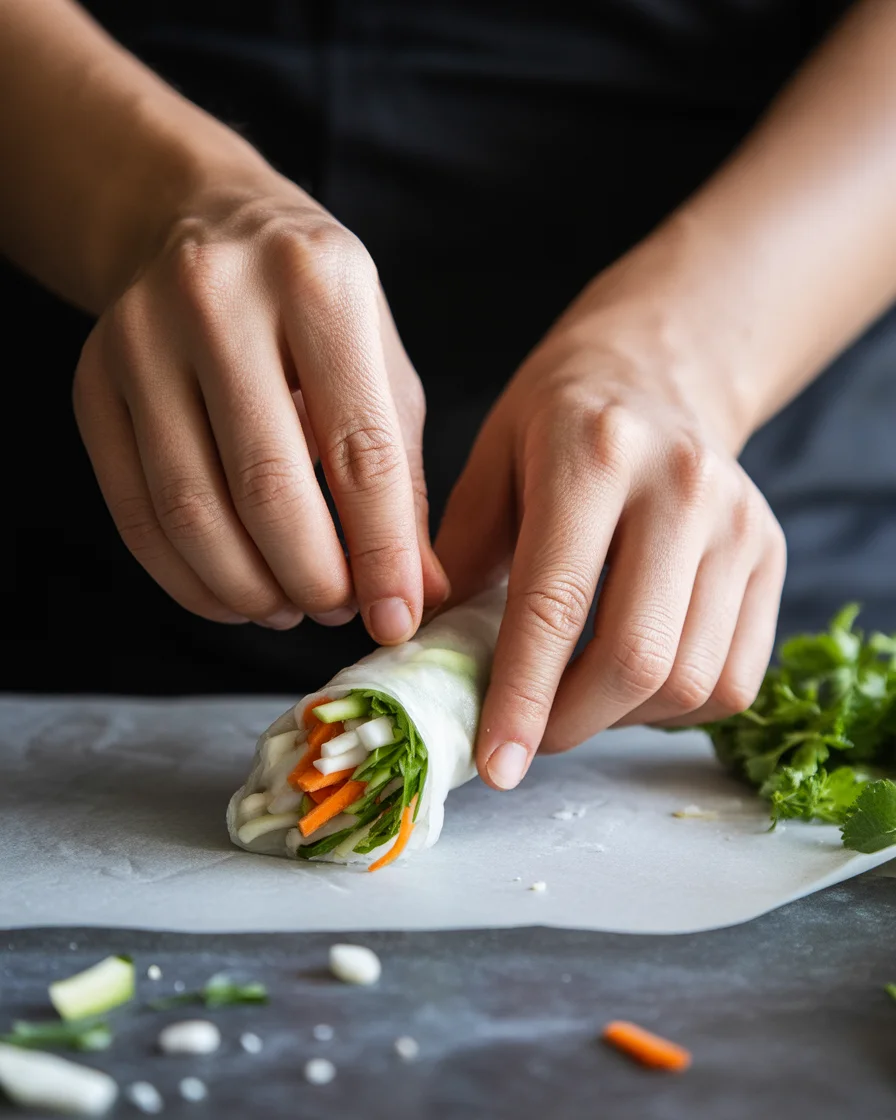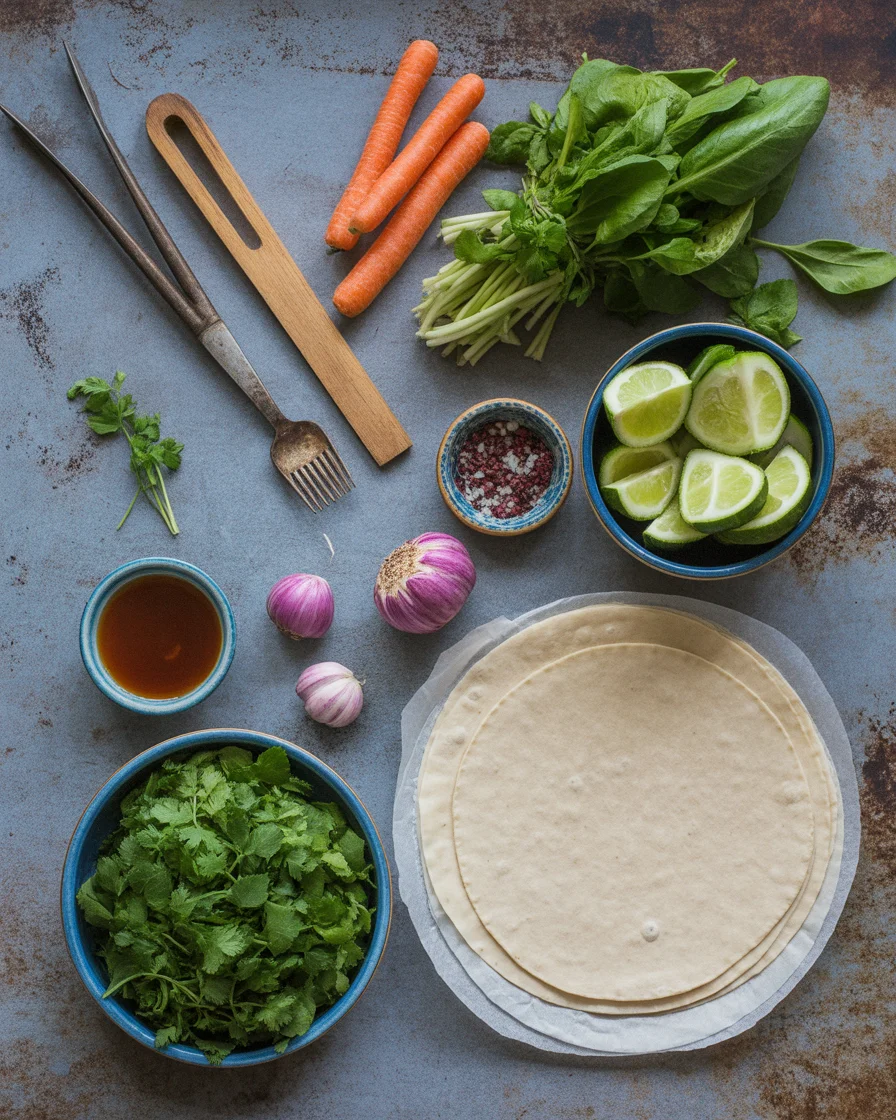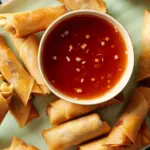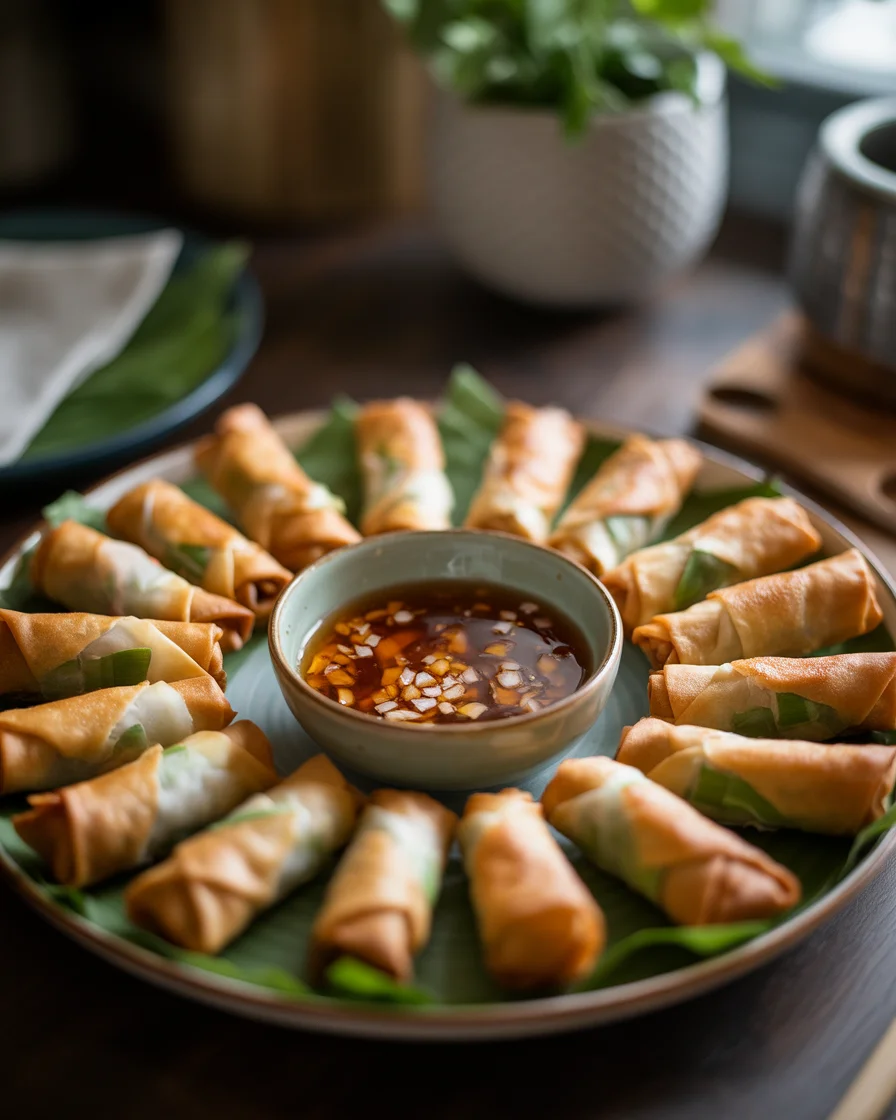Ever tried making traditional Filipino lumpia and just ended up with a messy kitchen and, honestly, not much to show for it? Same. Cooking can get chaotic! Maybe you’re just plain curious how this five-star restaurant food gets rolled up at home without falling apart. Or your cousin won’t stop raving about her lumpia but you’ve never even found the wrappers at your own grocery store. Whatever the reason, we’re about to crack open the secrets to making traditional Filipino lumpia in real-life kitchens—trust me, if I can get it right, so can you.
The Story Behind This Recipe
Hey, I’m Alexandraa! This Traditional Filipino Lumpia was built for real kitchens: simple steps, reliable results, and flavor that makes people ask for seconds. Ever tried making traditional Filipino lumpia and just ended up with a messy kitchen and, honestly, not much to show for it? Same. Cooking can get…
What Is Lumpia?
So you’ve probably seen lumpia on the table at every Filipino party. It’s kind of like the “must-have” snack. Lumpia, to put it super plain, is a Filipino spring roll. Usually filled with a crazy good mix of ground pork, tiny slivered veggies (think carrots and onions), and sometimes even shrimp if you’re feeling fancy.
Unlike those thick, chewy Chinese egg rolls, traditional Filipino lumpia is skinny—like, almost too easy to eat way too many at once. It gets fried until it’s this crispy, golden brown stick of joy. Not kidding, people will swarm the plate if you leave it out too long. There are sweet versions too, but let’s stick with the classic savory for today. And honest truth, once you make it at home, every other brand or attempt tastes like a knock-off.

How to Make Lumpia
Honestly, you don’t need fancy gadgets. You mostly need a little patience (and a willingness to get your hands dirty—chopping is part of the deal). Grab some ground pork, chopped onion, minced garlic, grated carrots, a couple of eggs, and lumpia wrappers. Soy sauce and salt finish the mix.
Here’s how it usually goes for me: Toss all the filling ingredients into a big bowl and just mash them together. Kneading with your hands helps mix the flavors—just don’t be afraid of the mess. Now, about those wrappers? Gently peel ‘em apart or they’ll tear (happened way too many times). Place a spoonful of mixture at one end, fold, and roll tight. Seal the edge with a dab of water—think mini food burrito but stick-shaped.
Frying time: Pop in hot oil and don’t walk away or they’ll burn before you blink. Golden brown is the goal. Cool them a minute. (Pro tip: Try not to eat the first one immediately—burnt tongue is real.) When I first got the hang of it, my whole family nearly applauded. These things go quickly! 
How to Serve Lumpia
You finally made a bowl full of these crispy rolls. Now what? Serving traditional Filipino lumpia isn’t hard but there are a few tricks that make it next-level. Here’s what I usually do:
- Pile them high on a big platter so they look generous (seriously, nobody wants a sad, bare plate).
- Serve with sweet chili sauce or a mix of vinegar and minced garlic for dipping.
- Pair lumpia with rice, pansit, or even stuff them in soft bread for an epic snack.
- Set out extra napkins, because these are finger food perfection.
And don’t let them sit too long—nothing sadder than soggy lumpia!
Can You Freeze Lumpia?
Okay, major question. Yup, you can freeze lumpia and I swear it tastes almost just as good after. Here’s what I do: Roll them up, place ‘em uncooked in a single layer on a tray, and freeze. Once hard, dump them in a freezer bag. Don’t fry before freezing, it messes with the crunch.
When you’re ready for lumpia again (midnight cravings or surprise guests, hello), just fry straight from the freezer. No need to thaw. They’ll be just as crisp and lovely, saving you a ton of time next party. My cousins call this “having snacks on emergency standby.” Trust me, it’s game-changing.
“I tried making lumpia for my husband’s birthday party, and keeping extras frozen was honestly a lifesaver! Everyone wanted seconds and I just fried another batch.”—Jessa, actual lumpia fan
Where to Buy Lumpia Wrapper
I’ll admit, lumpia wrappers can be sneaky to find if you don’t live near a big Asian market. Sometimes, even the tiny mom-and-pop grocery stores in my town will have them hidden among the frozen goods. Ask for “spring roll wrappers” but check for ones labeled “for frying” (the delicate, paper-thin kind). Don’t use thick egg roll skins or you’ll end up with heavy, chewy rolls. Trust me here.
I’ve even bought them online when I had no other option. Keep ‘em in the freezer and just thaw when ready to use. They dry out pretty quickly so, once opened, cover unused wrappers with a damp towel. Oh! And never try to substitute flour tortillas—I’ve tried, it’s… not good.
Common Questions
Q: Can I bake lumpia instead of frying?
A: Sure, you can! The result isn’t quite as crisp, but it’s lighter. Just brush with a bit of oil so they brown up.
Q: Is it okay to use other meats?
A: Absolutely! Chicken, beef, even totally veggie mixes work. Use what you’ve got.
Q: What sauce goes best with lumpia?
A: Sweet chili sauce is a classic, but spiced vinegar with garlic is super legit too.
Q: How do I keep lumpia crispy after frying?
A: Lay them on a rack instead of paper towels, so air circulates. Don’t cover them when hot.
Q: How long will lumpia last in the fridge?
A: Cooked lumpia are best eaten fresh but you can keep them in a sealed container up to three days. Reheat in the oven or toaster for crunch.
Your New Favorite Party Food Awaits
All the secrets to making traditional Filipino lumpia are right here—seriously, it’s doable even for total beginners. Get yourself some wrappers, a simple filling, and start rolling. Friends and family will think you’re a culinary genius. Hey, check out this Traditional Filipino Lumpia Recipe if you want to see step-by-step pictures, or join others swapping stories and photos in this traditional Filipino lumpia recipe and cooking experiences group for even more inspiration. Don’t stress if you mess up the first couple. You’ll get that crispy magic soon. Promise!

Filipino Spring Rolls
Ingredients
Method
- In a large bowl, combine ground pork, chopped onion, minced garlic, grated carrots, eggs, soy sauce, and salt.
- Mix the filling thoroughly with your hands until well combined.
- Peel apart the lumpia wrappers carefully to avoid tearing.
- Place a spoonful of the filling at one end of a wrapper.
- Fold the sides over the filling and roll tightly to seal, using a dab of water to seal the edge.
- Heat vegetable oil in a frying pan over medium-high heat.
- Fry lumpia in hot oil until golden brown, about 3-4 minutes on each side.
- Remove and let cool briefly before serving.



